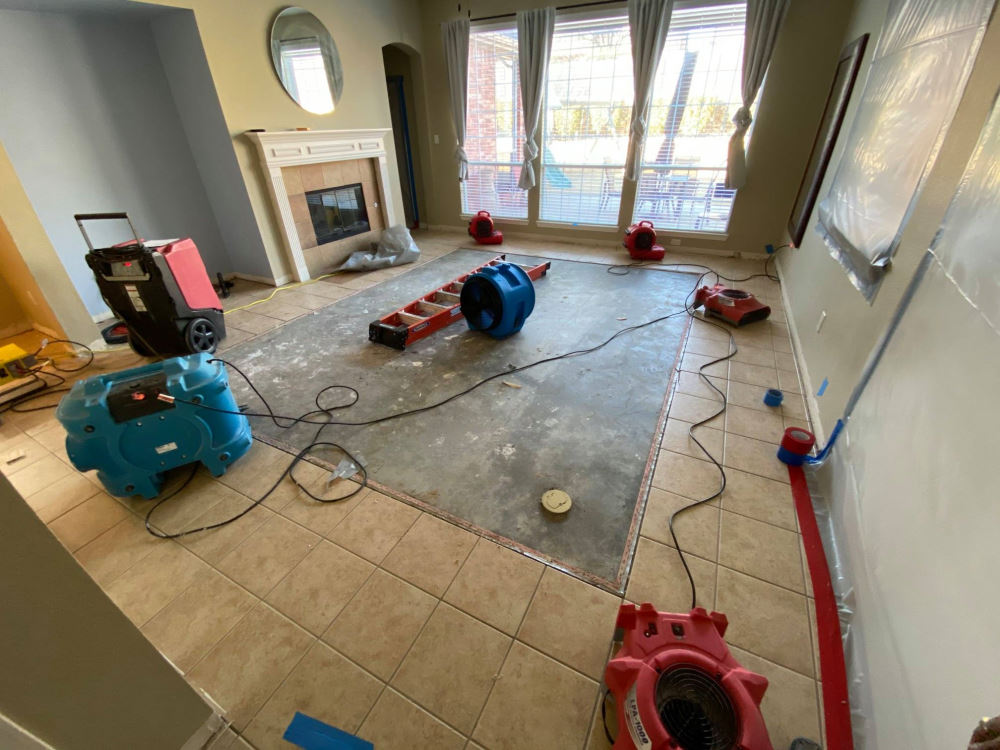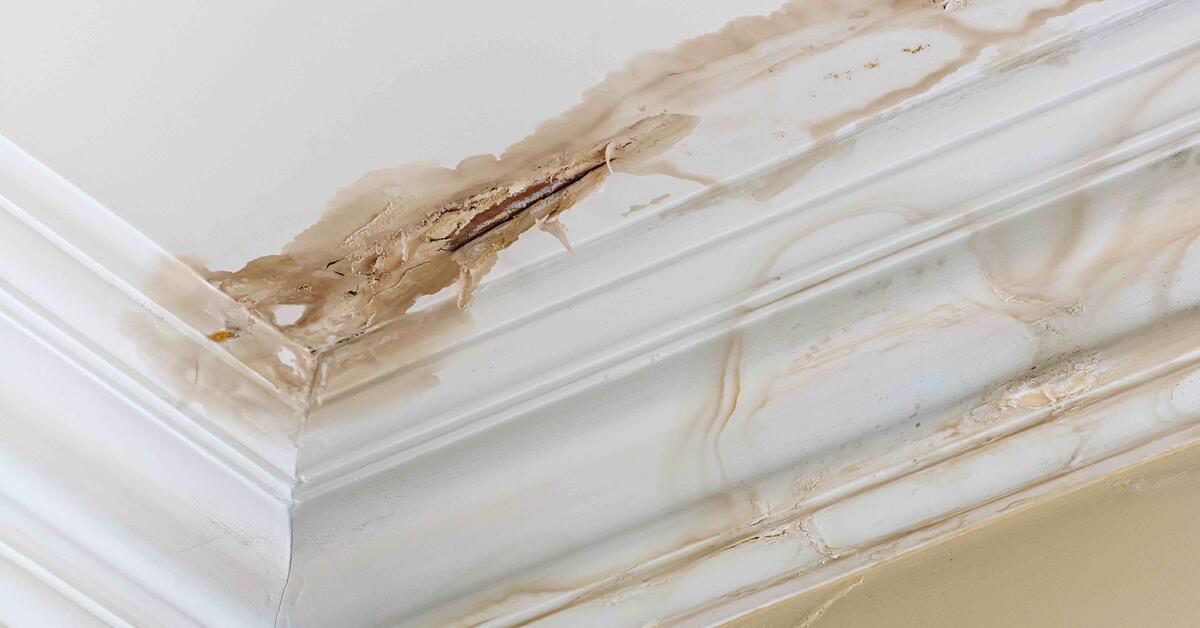The Process of Water Damages Cleanup: Guaranteeing Your Home Is Recovered Successfully
Water damage can be a daunting difficulty for property owners, necessitating a organized and careful cleanup process to restore safety and capability. An extensive evaluation is critical to recognize the extent of the damages and establish the proper remediation measures. Following this, reliable water removal strategies play a critical function in mitigating additional harm. The subtleties of drying out, sanitizing, and ultimate remediation are just as essential and often forgotten. Comprehending these phases can make a considerable distinction in the result of your home's repair, prompting a closer take a look at what each step requires.
Assessing the Damages
Upon discovering water damages, the primary step is to extensively evaluate the degree of the impact. This first evaluation is essential, as it assists identify the essential actions for reliable clean-up and restoration. Begin by checking the affected areas, consisting of walls, ceilings, floors, and individual possessions, to identify the resource of the water intrusion, whether from flooding, leaks, or condensation.
Recording the damage is vital for both insurance policy cases and intending reconstruction initiatives - damage restoration services. Use pictures and created notes to catch the severity of the damages, noting any type of afflicted structural aspects and materials. Pay special attention to areas that may not be instantly noticeable, such as behind wall surfaces and under carpets, as hidden dampness can bring about additional issues, including mold growth
Additionally, assess the timeline of the water exposure. Inevitably, an extensive assessment lays the foundation for a successful water damages clean-up process, guaranteeing that all influenced locations are dealt with efficiently and extensively.
Water Extraction Techniques

Experts usually use completely submersible pumps for larger quantities of water, which can swiftly alleviate flooding in cellars or various other impacted locations. For smaller amounts, wet/dry vacuum cleaners are commonly utilized to remove residual moisture from carpetings and difficult surfaces. In addition, making use of mobile extractors enables targeted elimination in constrained areas or locations with delicate products.
In instances of contaminated water, such as sewer or floodwater, advanced extraction strategies might include making use of biohazard tools to make sure safety and compliance with health and wellness policies. High-powered removal devices are important in decreasing water retention in architectural products, which can cause mold and mildew development and structural deterioration if not dealt with without delay.
Ultimately, the effectiveness of water extraction strategies plays a crucial role in the total success of the water damage clean-up procedure, laying the foundation for succeeding remediation initiatives.
Drying and Dehumidification
As soon as standing water has been effectively extracted, the next crucial phase in the water damages cleanup procedure is drying out and dehumidification. This action is important to prevent more damages and mold and mildew growth, which can happen within 24 to 48 hours in moist environments.
To attain reliable drying out, specialized tools such as industrial-grade air movers and dehumidifiers is utilized. Air movers flow air throughout damp surfaces, enhancing dissipation prices, while dehumidifiers minimize humidity degrees airborne, promoting a helpful atmosphere for drying out. The mix of these tools ensures that dampness is extracted from walls, furnishings, and floorings, allowing them to dry thoroughly.
It is essential to keep track of the drying out process carefully. Specialists usually make use of wetness meters to analyze the wetness material in different products, ensuring that all impacted areas get to appropriate dryness levels. This precise technique aids to avoid covert wetness pockets that can cause architectural damage or harmful mold growth.

Cleaning and Disinfecting
After the drying out and dehumidification stage is total, the following vital action in water damage cleaning is cleaning up and sterilizing the influenced areas. This procedure is vital to stop the development of mold, microorganisms, and other virus that flourish in damp environments.
The cleaning phase generally includes eliminating any debris, dust, and contaminants from surfaces utilizing specialized cleaning up representatives. For tough surface areas, a mix of soap and water or commercial cleansing items is often employed. Soft materials, such as furniture and carpetings, may need extra comprehensive cleaning techniques, including heavy steam cleansing or deep extraction methods, to ensure comprehensive cleanliness.

Sanitizing follows cleaning, utilizing EPA-approved disinfectants to get rid of unsafe microbes. This step is necessary, especially in locations that might have entered into call with floodwaters or sewer, as these resources can posture severe health and wellness threats.
Additionally, it is very important to attend to any kind of remaining smells, which might call for using smell neutralizers or sophisticated strategies like ozone therapy. Correct cleaning and sterilizing not only bring back the safety and security and health of your home yet additionally prepared for successful restoration and repair work in subsequent phases of the water damage cleaning process.
Remediation and Repair Services

Once the assessment is full, reconstruction efforts can begin. This commonly involves repairing or replacing damaged materials, making sure that all work follows regional building ordinance and criteria. If drywall has actually been compromised, it will require to be gotten rid of and changed with new material. Additionally, floor covering may call for similar focus, depending upon the degree of water exposure.
It is critical to engage knowledgeable remediation specialists during this process, as they possess the expertise to take care of complex repair work properly. They can assist mitigate potential future problems, such as mold and mildew growth or structural instability, therefore guaranteeing a risk-free and habitable living setting. Inevitably, efficient repair and repair services recover the home's stability and improve its general value.
Verdict
To conclude, the procedure of water damage clean-up is vital for recovering a home to its pre-damage condition. Each phase, from analyzing the damages to implementing effective water extraction methods, adhered to by thorough drying out, disinfecting, and essential fixings, plays a vital duty in making certain security and conformity with building standards. Reliable execution of these steps not just minimizes immediate damage yet additionally boosts the long-term honesty and value of the residential or commercial property.
Water damage can be a challenging obstacle for homeowners, necessitating a organized and precise clean-up process to recover safety and capability. Ultimately, an extensive analysis lays the foundation for a successful water damages clean-up procedure, guaranteeing that all influenced locations are resolved efficiently and extensively.
Efficient water removal strategies are vital in mitigating damage and stopping additional issues adhering to a water intrusion occasion.In conclusion, the process of water damages cleaning is crucial for bring back a home to its pre-damage problem. Each phase, from analyzing the damage to implementing efficient water extraction methods, adhered to by thorough drying, disinfecting, and needed repair work, plays an essential function in guaranteeing security and compliance with structure standards.